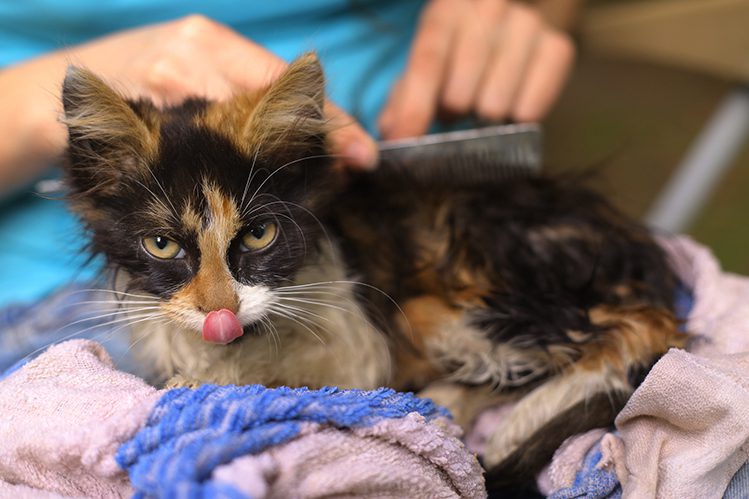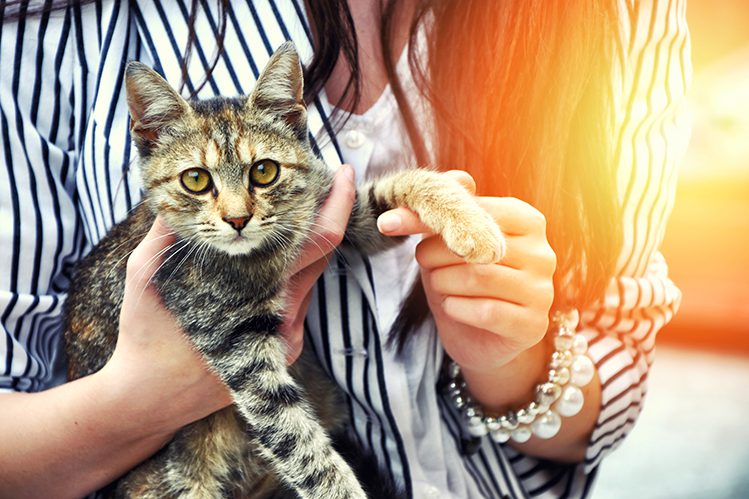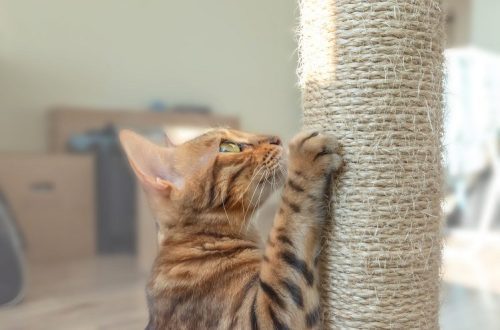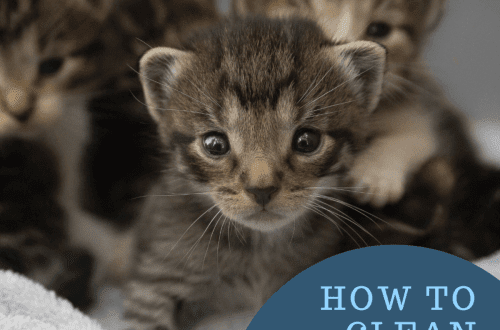
Picked up a kitten from the street: action plan
The decision to adopt a kitten should be weighed and carefully considered. But there are situations when the life of a small creature is at stake and every minute is worth its weight in gold. A kitten can be thrown under the door, or you, returning home from work, will stumble upon a defenseless homeless lump and cannot pass by. If so, you are a real hero! The kid is very lucky to meet you, otherwise he would most likely die. But be careful: homeless animals can carry serious infectious diseases. To save the baby and keep your own health and the health of other pets safe, you need to act correctly and quickly. Our 10 steps will help you with this!
Step 1: isolation
If you have other pets at home, in no case do not rush to introduce them to the new one. A kitten from the street is almost 100% infected with fleas and helminths, in addition, it can carry the infection.
For the first time, the kitten must be isolated from other pets. Well, if you can allocate a separate room for him. But if not, a pantry or a glazed balcony will do (in the warm season).
Ideally, the quarantine period lasts two weeks. This is the incubation period for most infections. But the sooner you take the kitten to a specialist, the sooner you get a complete picture of his health. It is possible that there will be no need for a long quarantine.
Isolation implies not only the division of space, but also the differentiation of things. The newcomer and other pets should not have common bowls, toys, beds, etc.
Step 2: Wash your hands after contact
Wash your hands thoroughly with soap after each contact with the kitten!
Step 3: visit the veterinarian
Take your kitten to a veterinarian as soon as possible. Explain that you picked up a kitten from the street, and he will conduct all the necessary tests, examine the baby, recommend antiparasitic agents, type of feeding, etc. Depending on the condition of a particular animal, care for him may differ. It will be useful to get up-to-date recommendations from a specialist, because. the kitten is weakened, and the slightest mistake can lead to the saddest consequences.
Step 4: home inspection
If you are unable to immediately contact the veterinarian, conduct a home examination. Examine the kitten’s eyes and ears. Heavy surface dirt can be removed with a clean cloth and boiled water. But to climb into the auricle with an ear stick is not worth it! Bald patches and bald spots can be the result of poor nutrition and life on the street, as well as symptoms of skin diseases. Try not to come into contact with them and do not self-medicate. Only a specialist can make a diagnosis and prescribe the correct treatment.
Step 5: bathing
Due to stress, kittens are not recommended to be bathed on the first day of their stay in a new home. However, if the baby is very dirty, it is wiser to wash it. This will require a special shampoo for kittens.
If there is no suitable shampoo at hand, rinse the kitten with plain water or remove dirt with a damp sponge (napkin, brush, etc.).
Do not use products that are not intended for kittens: they can harm him!

Step 6: Flea Treatment
The next step is to remove parasites from the kitten. How to do this, the veterinarian will tell you. He will recommend a safe drug and dosage according to your kitten’s age and weight.
If you buy your own flea remedy, make sure that it is suitable for the kittens and carefully calculate the dosage according to weight. More about this in the article.
Step 7: Deworming
Most domestic cats are infected with helminths. What about the homeless? With a 99,9% probability, a kitten from the street has worms, and this is very dangerous for him. Severe invasion can lead to death.
should be carried out under the supervision of a veterinarian. Incorrectly selected products or dosage can be fatal, especially if the kitten is not yet 2 months old.
Step 8: feed properly
Proper nutrition is the foundation of any pet care. It’s scary to think what the kitten ate on the street. Unsuitable living conditions, stress, diseases and other negative factors hit the childish, fragile body. It’s up to you to fix it! Choose a good balanced diet specifically for kittens. Follow the feeding recommendations, and very soon your baby will gain strength!
Step 9: Vaccination
When the kitten is fully grown and his health is in order, we move on to the next step: vaccinations. Read more about this in the article.
Step 10: Continuous health monitoring
The hardest part is over: the baby’s life is out of danger! You can finally relax and enjoy the company of your pet. However, the task of each owner is to regularly take care of his ward, notice any ailments in a timely manner, take the pet for preventive examinations to the veterinary clinic and always keep abreast.

There is no doubt that the rescued kitten is very lucky with the owner! But you are also very lucky to have him. The most devoted, grateful and sensitive friend will definitely grow out of a timid baby. Here you will see!





